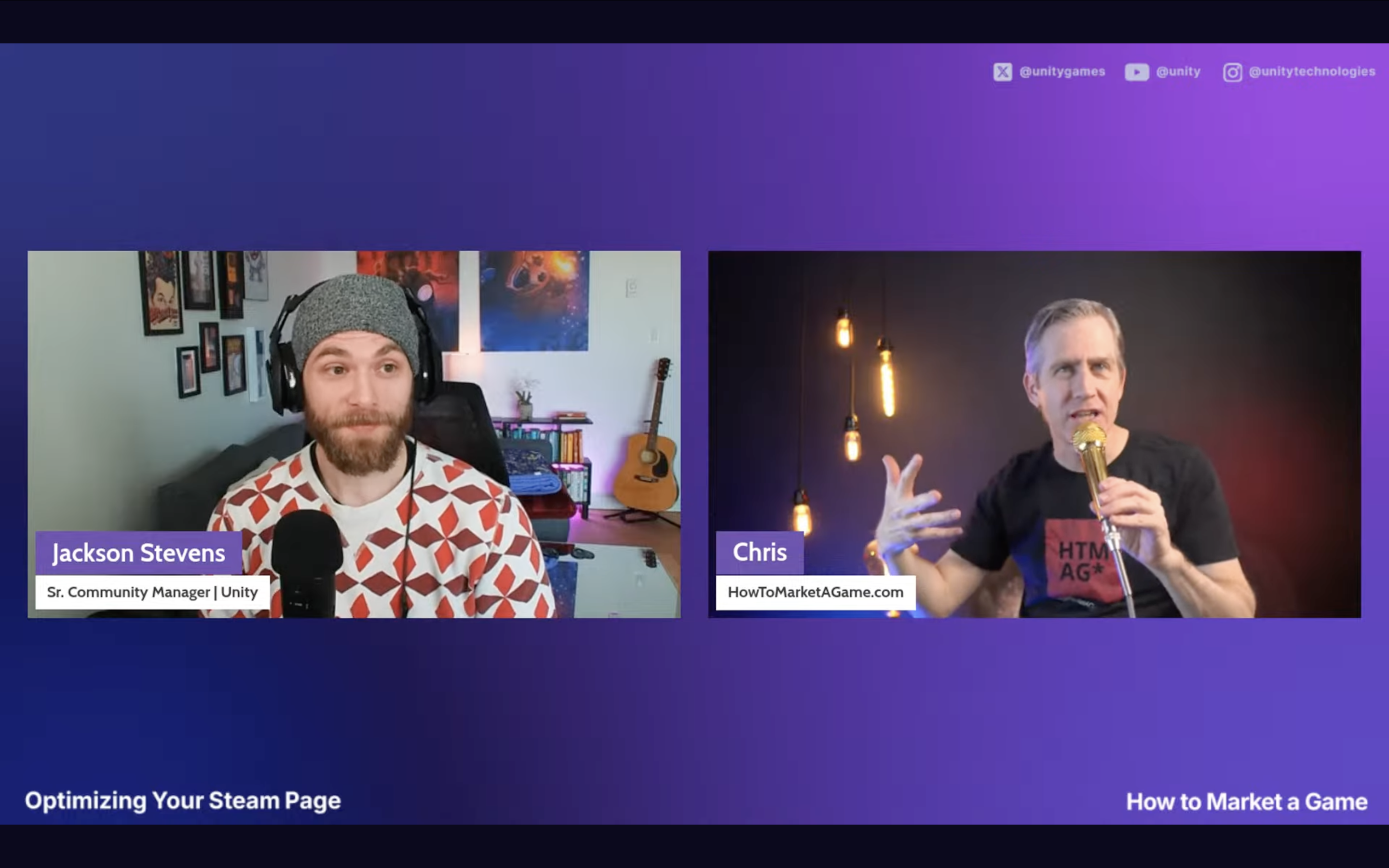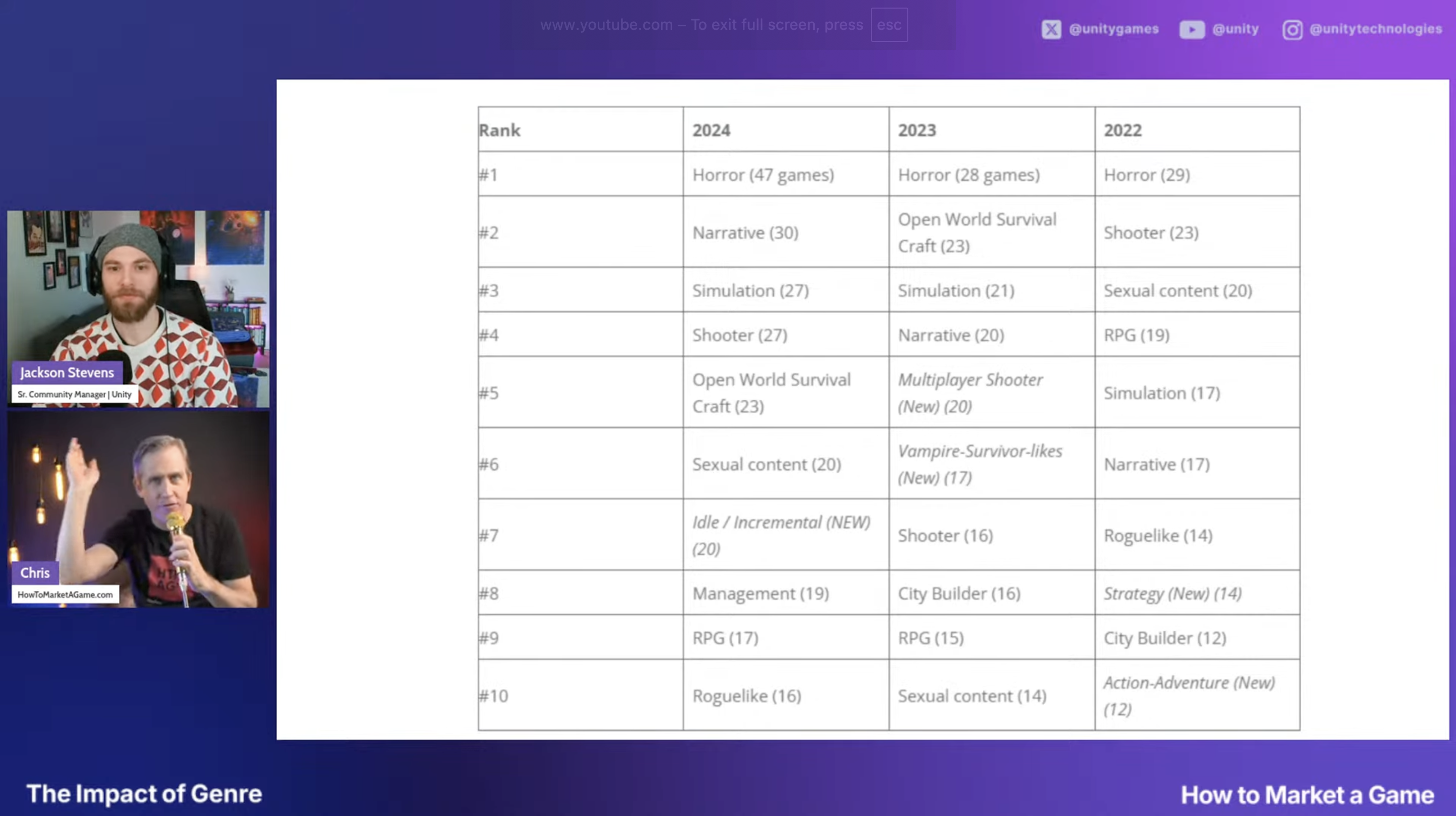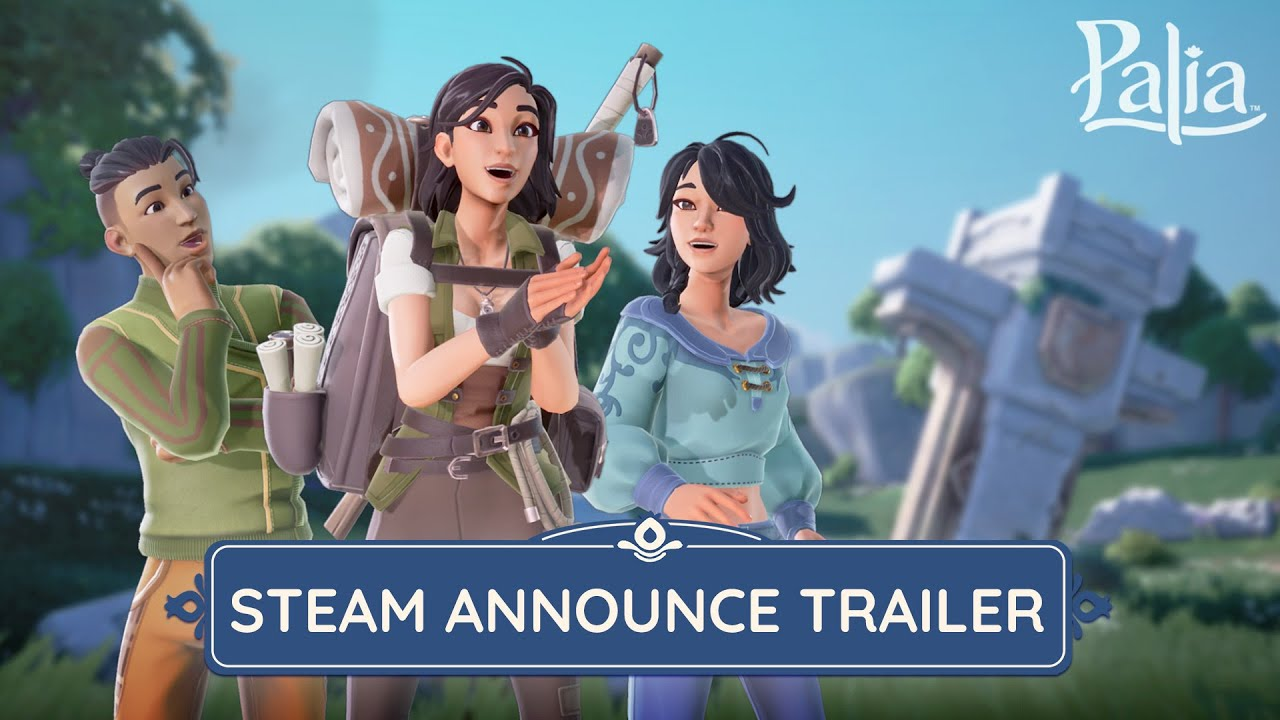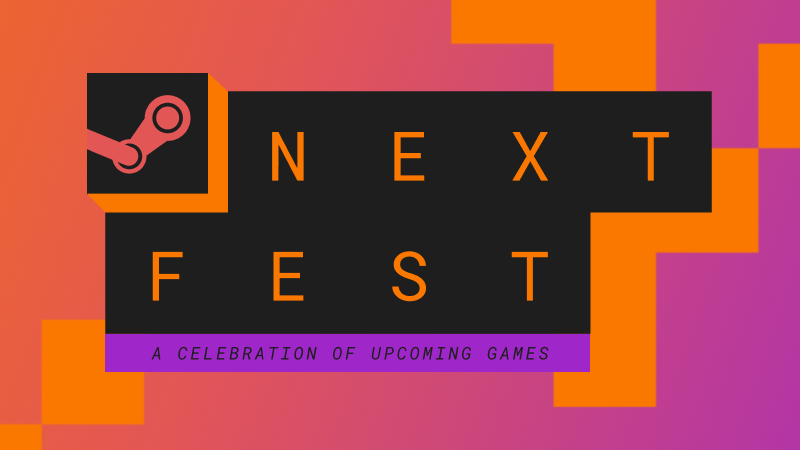5 TIPS & STRATEGIES FOR MARKETING INDIE GAMES
Post Category: News
Chris Zukowski from HowToMarketAGame.com has shared five essential tips to help your indie game stand out in Steam's crowded marketplace.
Below are the key points from the online interview hosted by Unity:

1. Optimize Your Steam Page
A good Steam page should make the type of game obvious and show it’s worth a player’s time. As Chris puts it:
“You wanna make your Steam page look like your type of game so that at an instant somebody shopping goes, ‘Ah, it's that type of game—I’m gonna buy it.’”
You should not aim to create a game that appeals to everyone. Instead, focus on making the very best game possible within a clearly defined genre—for example, creating the scariest horror game you can. The clarity of your genre should be immediately conveyed through the game’s cover art. You only have a few seconds to capture the attention of someone scrolling through a game store platform, so every advantage counts.
“Every capsule always has a hammer. I don’t know why. But if you just put a hammer in your thumbnail… people are gonna see that hammer and subconsciously go, ‘Oh, I bet I build a city with that.’”
It’s not just about being clear, it’s about looking professional:
“You wanna show quality. And another way to do quality is you should hire a capsule artist. I’m telling you folks… don’t just use Unity, take a screenshot, and then use MS Paint to write the title of your game. Don’t do that. Players will look at that image and might otherwise assume your game is just one of the 17,000 titles not worth noticing.”
“Another way to showcase the quality of your game is through in-game screenshots. These should display a variety of environments, assets, and even elements of the UI (user interface).”
In addition to the capsule art, a short trailer of 5–6 seconds can significantly boost the game’s visibility and is something worth paying attention to.
“That’s an effective method, and you should definitely do it. However, avoid starting the trailer with a black screen and white text saying, ‘In a world of magic and mystery…’ followed by a slow camera pan across a grassy field. You need to cut out these useless parts and begin the trailer directly with gameplay. Otherwise, players won’t be able to tell what genre your game belongs to.”
Furthermore, you should update the game’s information once a month to make its Steam page feel more alive. Just a short description and a new screenshot can be enough.
2. Choose the Right Genre
Your biggest marketing decision might happen before you write a single line of code:
“The moment you say ‘I’m gonna make this type of game,’ you’ve actually made the biggest marketing decision… People think like, ‘Oh, I’ve made my game and now I want to start thinking about marketing.’ It’s too late.” Each platform has its own types of games that perform better. Some genres simply won’t be as profitable when released on Steam.”

Chris pointed out that the trend of popular game genres does not actually shift from year to year, as many people mistakenly believe. Certain genres consistently perform far better than others:
“Most of the games that do very well are genres that people don’t typically make. The big one is horror. The other ones I call crafty building strategy simulation-y games… It’s not like a linear story where you’re a dude with a sword and you run through an environment.”
Games that fall into open-world or sandbox-style genres—where players can freely build cities, move objects around, or manage shops—tend to sell well on Steam. These are also the types of games that can often be developed effectively by small-scale indie teams.
3. Avoid Common Steam Mistakes
A common pitfall? Not treating your Steam page like a proper launch:
“People have never announced their game… a lot of people just throw their Steam page up and then their Steam page is live. No. When you put your Steam page up, you announced your game.”

At the same time, you also need to release a trailer labeled “Announce Trailer”:
“When journalists and content creators see the words Announce Trailer, they will almost automatically click to watch it, and if they like it, they’ll start writing about it. People in the media are always triggered by that phrase. This is a free marketing tool that most people are overlooking.”
Also: don’t forget Steam’s built-in tools:
“You launch your game and… you didn’t push the ‘email wishlisters’ button? That’s a big one… You have two weeks from when you launch your demo to push this button called ‘email wishlisters’… do not forget.”
“Another stupid thing—check your tags. I’ve seen people who have like 10 tags. No—you wanna get all the tags.”
Chris also offered advice on choosing the right tags: pick a popular game on Steam that has gameplay similar to yours and copy their tags—except for the ones that don’t apply to your game. In addition, you should regularly review those tags to see if they’re still relevant. Make sure that the “Similar Games” section below your page displays titles that are actually close to your own. Update your in-game screenshots whenever there are changes..
When reaching out to streamers to playtest your project, keep your message short and to the point:
“Don’t write a full page about your game development journey. You only need to say: ‘Hi, I enjoy watching your stream, and you play the same type of game as mine. I just released a new demo and would love to send you a free build to try.’ That’s it.”
4. Prepare for Steam Next Fest

Chris stresses the importance of showing up to Steam Next Fest ready — your demo should be live well before the event:
“You should not be debuting your demo during Next Fest… it’s the quinceañera. It’s the grand debut of the final stage of yourself. You should have released your demo long before…You want your demo bulletproof… Because if on that first day everybody fires it up and there’s some bug… you’re done.”
“If you’re coming into Next Fest hot with more wishlists, you will do better. That’s why you want to get that demo out early and build some momentum before the fest begins. Valve’s algorithm gives every project a general level of visibility during the first 2–3 days of an event. Games that perform well within that window will receive additional recommendations. This means you must ensure that your demo runs smoothly and without issues.”
You should also distribute that demo to streamers, game content creators, and even game festivals. These factors contribute significantly to spreading the word about your project to a larger pool of potential players. As a result, the number of searches for your game’s title on Steam will increase, prompting Valve’s algorithm to further boost its visibility among their broader customer base.
Chris believes that common marketing methods such as tweeting at a specific hour, using the “right” hashtags, or hoping a TikTok video about your game will suddenly go viral are not effective ways to promote a game.
5. Supplement Your Steam Page
Visibility doesn’t have to cost much:
“There aren’t that many tools… you don’t need to buy a lot. Marketing is not pay-to-win that much. Marketing is actually much more strategic, and it’s about when you time certain activities and what you do.”
The only paid service Chris genuinely recommends investing in is hiring an artist to create the game’s cover art. For nearly everything else, it can be done manually and for free.
Final Thoughts
There’s no magic formula, but clarity, timing, and genre fit go a long way. Marketing isn’t just shouting on social media — it’s about making the right game for the platform, showing it clearly, and getting demos in front of players early.



